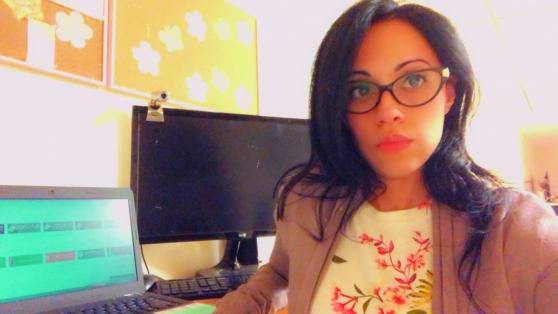
ELA teacher Tina Macchio says peer-led discussions allow students to take ownership of their learning.
In past eras, teachers gave lectures on content and students demonstrated mastery by storing, memorizing and recalling the material. But as our thinking about how students learn has evolved, our role as educators has shifted. In my 7th-grade English language arts classroom, I use peer-led discussions to instill in my students a mindset that their individual experiences are a valuable foundation for learning.
Participating in peer-led discussions builds my students’ communication and comprehension skills, develops their vocabulary and allows them to demonstrate their knowledge of the topic — all state learning standards. But more important, peer-led discussions allow students to take ownership of their learning. They get to share their own ideas about the text, which helps them learn that our classroom isn’t just a place to “provide the correct answer.” They learn the value of collaborating with their peers, which has an impact on their knowledge of the text, their openness to new ideas and their real world experiences.
After I have assessed students’ comprehension of the assigned text, I end each week with a peer-led discussion. I use protocols to help students organize their discussions.
In the 1-3-6 discussion protocol, students annotate the text and independently write an answer to one open-ended focus question. Then they work in trios to share three of their ideas about the focus question. After their nine ideas have been shared, they choose the best three. Then, two trios join together and each trio shares their three ideas, so that this new group has six ideas to discuss. The six students work together to determine which one idea is the most relevant.
In the think-ink-link activity, students first think about their answer to an open-ended question, write (ink) their answer and then link up with other students to share their ideas. They use accountable talk frames for their discussion and jot down ideas they’ve learned from their partners.
Of course, the COVID-19 pandemic makes it more challenging to convene peer-led discussions. PearDeck, Parlay and Padlet are essential virtual platforms for remote classrooms. Each allows students to respond to discussion questions in real time, so students can still share with each other their arguments, ideas, questions and voices. These platforms have helped decrease the sense of separation from each other we’re all experiencing. They also allow students who are learning remotely to share with students participating in person, and vice versa.
As I circulate through their groups and listen to their conversations, I learn from my students how I can build my own craft as an educator. I’m able to share my students’ insights with other classes and with my colleagues. Peerled discussions are essential moments in our classroom where my students and I teach, lead and learn from each other.
Peer-led discussions have helped my students see our classroom as an environment where they have autonomy and the opportunity to make a meaningful contribution to classroom learning.
Tina Macchio is an ELA teacher at IS 141 in Astoria, Queens.